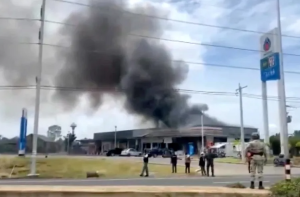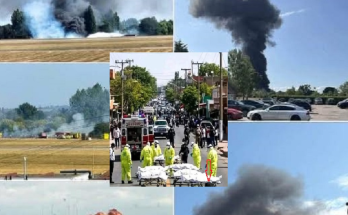1. Historical Roots & Flashpoints
The border dispute between Thailand and Cambodia, spanning about 817 km, traces back to colonial-era maps drawn by France in 1907. Although the International Court of Justice (ICJ) ruled in 1962—and reaffirmed in 2013—that the Preah Vihear Temple and some surrounding land belong to Cambodia, Thailand has never fully accepted the court’s demarcation. Periodic military skirmishes occurred in 2008–2011, particularly near the temple.
2. Escalation Timeline in 2025
February: Anthem Incident at Temple
On February 13, Cambodian soldiers and civilians visited the temple (Ta Moan Thom) and sang their national anthem—a move Thailand considered a breach of protocol. Thailand formally protested two days later, reinforcing its claim over the temple area.
May: Fatal Skirmish
On May 27–28, an exchange of gunfire erupted around Chang Bok and the broader Emerald Triangle, killing one Cambodian soldier. Both sides blamed the other for initiating the violence.
Early June: Diplomatic and Economic Moves
On June 8, both nations agreed to return forces to previously agreed positions. Cambodia filed a formal request to revisit more border issues at the ICJ, while Thailand emphasized bilateral negotiation
Starting June 12, Cambodia blocked Thai fuel, gas, fruit, and TV shows. In response, Thailand threatened to cut electricity, internet, and gas to border towns like Poipet.
Thailand’s Suranaree Task Force was granted authority to close or adjust opening hours of all border crossings as needed.
Political Fallout in Thailand
Between June 15–18, a private call between Thai Prime Minister Paetongtarn Shinawatra and former Cambodian PM Hun Sen was leaked. In it, Paetongtarn appeared critical of her military—a move that triggered political outrage and the collapse of her governing coalition. She was suspended on July 1.
On July 16 and 23, Thai soldiers lost limbs after landmines exploded in disputed areas, with Thailand blaming Cambodia for planting them—a claim Phnom Penh denied.
3. July 24: Full‑Scale Escalation
Military Engagement
On July 24, armed clashes intensified near Ta Moan Thom and Ta Kwai temples. Thailand reported spotting Cambodian UAVs and armed soldiers approaching its positions. Cambodian forces allegedly fired BM‑21 rocket launchers at civilian targets across the border
Thailand responded with airstrikes using F‑16 fighter jets against Cambodian military targets. The Thai army said it destroyed tanks and other installations.
Civilian Impact & Displacement
Reports indicate at least 11 civilians killed (including one Thai soldier) and dozens more wounded. Multiple Thai border provinces—especially Si Sa Ket—were hit by shelling and rocket fire. Hospitals and gas stations were struck.
Officials ordered evacuation of approximately 40,000 civilians from 86 villages near the conflict zones.
Diplomatic Breakdown
Thailand recalled its ambassador and expelled Cambodia’s envoy; Cambodia followed suit by doing the same. Cambodian PM Hun Manet called for an urgent UN Security Council session, accusing Thailand of “unprovoked attacks.”
Thai military leadership reportedly resisted immediate negotiations, stating “now is not the time for talks,” due to rapidly escalating hostilities.
4. Underlying Drivers & Strategic Stakes
Territorial Dispute & Nationalism
The dispute hangs on conflicting interpretations of the colonial 1907 border map. Areas near Preah Vihear and the Emerald Triangle remain hotly contested. The temple itself evokes strong nationalist sentiment on both sides—Malaysia and ASEAN have attempted mediation but so far with limited impact.
Economic and Cyber Pressure
Conflict has shifted beyond the battlefield into economic coercion: trade bans, border restrictions, blackout threats, and illegal immigration controls. Thailand and Cambodia are both disrupting internet and energy infrastructure in retaliation.
Political Instability
Thai domestic politics are deeply affected. The leak involving Paetongtarn Shinawatra has eroded support and made foreign policy more volatile—with military leadership gaining influence. Cambodian leadership remains under nationalistic pressure to defend sovereignty
Regional & Strategic Implications
Cambodia is deepening ties with China; Thailand maintains close military cooperation with the U.S. via exercises like Cobra Gold. ASEAN’s consensus model has so far failed to resolve the crisis. Malaysia has offered mediation, but broader regional unity is under strain.
5. What Comes Next?
Risk of Further Escalation
The situation is dangerously unstable: landmines, air assets, rocket artillery, and armored units are deployed near sensitive cultural and densely populated areas. Without restraint, incidents could spiral further.
Stalled Diplomacy
Cambodia is pressing for ICJ intervention on broader border areas—Thailand continues to push for bilateral talks—both mechanisms are currently blocked.
Humanitarian Concerns
Evacuations and trade restrictions are disrupting livelihoods and access to essentials. If hostilities persist, the crisis may trigger wider refugee flows and cross-border humanitarian needs.
Economic Fallout
Disruptions to border trade, tourism, fuel supplies, and agricultural channels are already impacting border economies. If economic warfare continues, broader macroeconomic effects could follow.
6. Summary Snapshot
| Date / Phase | Key Event | Significance |
|---|---|---|
| Feb 2025 | Cambodian anthem issue at border temple | Sparked diplomatic friction |
| May 27–28 | Deadly skirmish at Chang Bok | First fatalities, renewed military readiness |
| June | Economic retaliation, border closures | Spread conflict to civil, trade, and tech realms |
| July 1–16 | PM leak and suspension | Political crisis in Thailand, reduced diplomacy |
| July 24 | Full-scale military conflict begins | Airstrikes, rockets, evacuation, civilian deaths |
Final Thoughts
As of July 24, 2025, the Thailand–Cambodia border conflict has evolved from a long-standing territorial dispute into a full-blown crisis involving military action, political upheaval, economic isolationism, and humanitarian distress.
The deeper it goes, the harder it will be to untangle. Public trust in each government is faltering; populist nationalism is gaining traction; and both nations are tilting toward a more hardline military posture.
The urgent question now: Will diplomacy prevail, or are we witnessing the early stages of a broader regional flashpoint?
